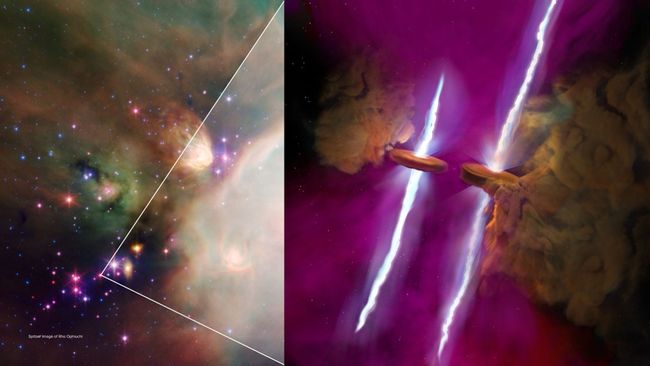This extensively researched star is, in fact, a binary system: ‘We were completely astonished’.
It’s amazing that this region still has so much to teach us about the life cycle of stars.

Nicholson, a celestial body in the constellation Ophiuchus that has long been observed by astronomers, has recently been found to be a binary system. The star in this picture is accompanied by a disk of material, signaling the creation of planets within the two celestial bodies.
These twins, located about 400 light years from our solar system in the constellation WL 20, have not yet reached one million years. Remarkably, they succeeded in blowing away the thick cocoon of gas and dust from around themselves, which means that the process of their creation is almost over. This means that astronomers can study the stars when they are growing into adulthood.
Over time in the telescopic analysis, it has been realized that the WL 20 group situated in the Rho Ophiuchi molecular cloud is made up of three stars forming a triangle. Despite being formed from the same region of gas and dust, two of the stars were inferred to be about two million years old. The third star which is located at the extreme south of the triangle and is least bright than other stars seemed to be less than a million years old.
This finding has triggered controversy among astronomers, Mary Barsony, for instance, an independent astronomer who led the study. In her talk at AAS’ 244th meeting in Wisconsin, she said she could not help but wonder why the stars in the WL 20 group are so different in age. Barsony and many other astronomers have dedicated years to studying these triplets and the location of them, Rho Ophiuchi. “We believed that we had a good grasp of it,” she said in the statement prepared by NASA.
However, in October, while observing the region with the James Webb Space Telescope, the Mid-Infrared Instrument (MIRI) spotted something unexpected. They found out that the third star, named as WL 20S, was a binary – in fact, it was twosome of identical siblings. Amazingly, the two stars were endowed with copious jets originating from the poles with labelling of north and south respectively. More studies made by that large telescope in Chilean desert called ALMA – a 60 antennas array which works as a single, huge telescope – revealed that each of these twin stars had a disk of gas and dust around it. Barsony said that if one of these twin stars were to accept the place of our Sun, its disk spreads farther than the orbit of Saturn.

“We were absolutely stunned when we first saw these images,” she told reporters during a press briefing. Without MIRI, astronomers wouldn’t have known about the twin star or the jets, she added. “It’s like having brand new eyes.”

This indicates that astronomers have not yet fully explained the formation of multiple star systems such as the four-star system in WL 20. Thus, investigation of these quadruplets could be more informative for the study of the underlying processes.
As Mike Ressler, a study co-author and project scientist for MIRI at NASA’s Jet Propulsion Laboratory, noted, what is perhaps most striking is how much more remains to be learned about the life cycle of stars in this region. Ressler has spent nearly twenty nine years of his life researching the WL 20 group.
Upon being awarded observing time with JWST, Ressler chose to point it at WL 20 despite the fact that it was in a different region of the sky to the rest of his targets.
Ressler said: “I took the opportunity to include it because I might never get another shot even if it does not fit in with the rest. “Fortunately, we have come across something exceptional; the results are really stunning. ”
Do not forget to share your opinion with us to provide you with the best posts !



0 Comments